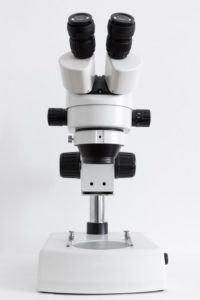Generally speaking, seeing small objects can be challenging yet necessary, especially for scientists in different fields, such as medical science, forensics, astronomy, and nanotechnology.
To aid in exploring tiny samples up close, researchers need to magnify and keep their complete detail apparent at the same time. Powerful instruments have since become available and helped make scientific research a lot easier.
At the same time, these instruments also presented an influx of features that pose questions like, “what is the difference between magnification and resolution” and “which is more important, precise detail or raw enlarging power?”
Magnification vs. Resolution
Magnification is a process that involves the enlargement of objects, only in appearance but not in physical size. In the case of optical instruments, they bend light to enlarge an image until the magnification becomes indistinct. All too often, the term magnification is confused with the term resolution.
Resolution, in turn, describes the ability of imaging systems to show the full detail of the object that’s being imaged. It also pertains to the resulting image’s sharpness, fineness, and clarity when viewed through an instrument.
Resolution primarily depends on the distance between two identifiable radiating points. A single microscopic imaging system may have several individual parts, including a lens, as well as recording and display components. These parts contribute to the optical resolution of the imaging instrument as much as the environment in which the imaging is being performed.
The telescope and the microscope are the oldest and most common optical instruments still in use today. The latter is used to magnify small images, while the telescope is used to magnify images from a distance.
Addressing the Limits of Magnification and Resolution Using Electron Microscopes
Scientists figured out why we cannot see an unlimited amount of detail when peering through a microscope. It turns out that objects with less than half the wavelength of the microscope’s illumination source won’t be visible under that instrument.
A light microscope utilizes visible light with a wavelength of 400 nm or less than one-thousandth of a millimeter at the minimum. This limit signifies that users will not see objects smaller than 200 nm, which is about the width of an average-sized bacterium using light microscopes primarily due to the quality of their lenses.
Such limitation of light microscopy led to the invention of electron microscopes. EMs possess a far greater resolving capacity than light microscopes, so they can be relied on to provide much more detail.
In the same manner that light has a wavelength, the movement of high-speed electrons also has a specified wavelength. The wavelength of electrons is shorter than that of visible light by a thousand times, so electron microscopes are designed to resolve objects that are thousands of times smaller. At present, electron microscopes can detect objects approximately 10⁻⁹ m or one-twentieth of a nanometer in size. They are more than capable of visualizing molecules, viruses, and even individual atoms at this range
In theory, electron microscopes can visualize even smaller objects than they currently can. Although they have limited resolution at the moment due to technical aspects of viewing samples, it may become possible to view objects at the theoretical resolution limit of electron microscopes before long.
Which is More Important?
Users need to keep in mind that high magnification without high resolution will not allow them to differentiate between an object and its sub-cellular parts, even though it makes the tiny sample visible. In most applications, scientists depend more on resolution to tell key differences between a sample and its parts. However, one cannot discount the importance of magnification since an end-user should first magnify to the point where resolution becomes relevant.
Resolution and magnification are interdependent. Usually, high magnification signifies high resolution. However, the larger a sample image gets, the lesser its resolution becomes. One of the reasons behind this is the irregularity and abnormality in how the imaging system’s lenses are designed.


